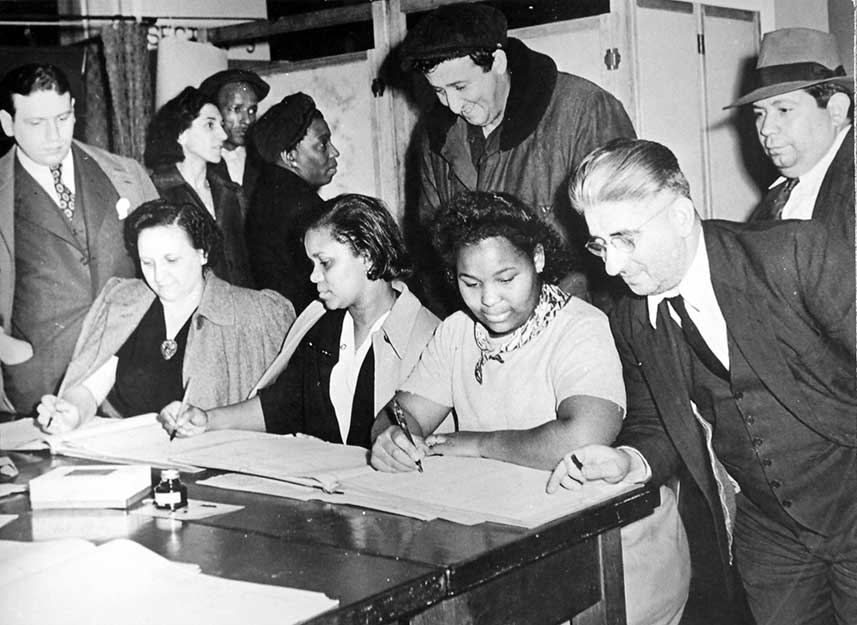1916 The Great Migration Begins

Rising industrial output in the North, caused by World War I, began to fuel what became known as the "Great migration." In the course of the "Great Migration," millions of Blacks migrated from the South to Northern cities-- in pursuit of better economic opportunities.
The onset of World War I in 1914 marked a significant shift in the economic landscape of the United States, particularly in the industrial sector of the Northern states. Rising industrial output driven by the demands of the war created an unprecedented demand for labor. This demand began to fuel what would become known as the “Great Migration,” a massive demographic shift that saw millions of African Americans move from the rural South to the urban North in pursuit of better economic opportunities and a more hopeful future.
Before the Great Migration, the majority of African Americans lived in the Southern states, where they were subjected to Jim Crow laws, racial segregation, and economic exploitation in the form of sharecropping and low-wage labor. The South’s economy was predominantly agrarian, and opportunities for advancement were limited. The boll weevil infestation, which devastated cotton crops in the early 20th century, further exacerbated the dire economic conditions for Southern Black families. The combination of these factors created a powerful push towards migration.
Simultaneously, the industrial boom in the North created a pull effect. Factories, railroads, and shipyards were expanding rapidly to meet the war-related production needs. With many European immigrants cut off due to the war and white American men serving in the military, Northern industries faced severe labor shortages. Industrialists began to recruit Black workers from the South, offering higher wages and the promise of a better standard of living. Northern newspapers and labor agents actively promoted these opportunities, and word spread quickly through Black communities.
The Great Migration began around 1916 and continued in waves through the 1970s. During the initial phase, from 1916 to 1930, it is estimated that approximately 1.6 million African Americans moved North. Cities like Chicago, Detroit, New York, and Philadelphia saw significant increases in their Black populations. Chicago’s Black population, for instance, grew from about 44,000 in 1910 to over 233,000 by 1930. This massive influx of people reshaped the demographic, economic, and cultural landscapes of these cities.
For many African Americans, the move North represented not just an economic opportunity but also an escape from the pervasive racism and violence of the South. In the North, they found greater political freedom, the ability to vote, and less overt racial discrimination, though segregation and racial tensions certainly existed. The chance to build a better life for themselves and their families was a powerful motivator.
Despite the promise of a better life, the journey and the transition were not without significant challenges. Migrants often faced crowded and substandard housing conditions in segregated neighborhoods, competition for jobs, and racial prejudice from white Northerners who resented their presence. The influx of Black workers sometimes led to labor tensions and race riots, such as the Chicago Race Riot of 1919, which underscored the fact that racial equality was still a distant goal.
However, the Great Migration also had profound and positive impacts on African American culture and society. The concentration of Black people in Northern cities fostered vibrant cultural movements, the most notable being the Harlem Renaissance of the 1920s. This cultural flowering included achievements in literature, music, art, and intellectual thought, and it had a lasting impact on American culture as a whole. Jazz, blues, and other forms of Black music gained nationwide popularity, influencing countless artists and shaping the cultural fabric of the nation.
Politically, the Great Migration also empowered African Americans. The increasing Black populations in Northern cities translated into greater political influence. Black voters began to play a crucial role in elections, and African American leaders started to gain political office. Organizations such as the NAACP and later, during the Civil Rights Movement, other advocacy groups, found strong support bases in these urban centers, which helped to advance the struggle for civil rights and social justice.
 >
>